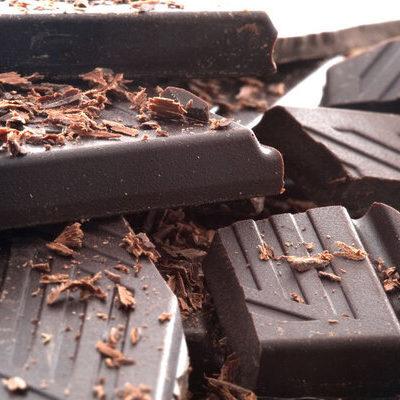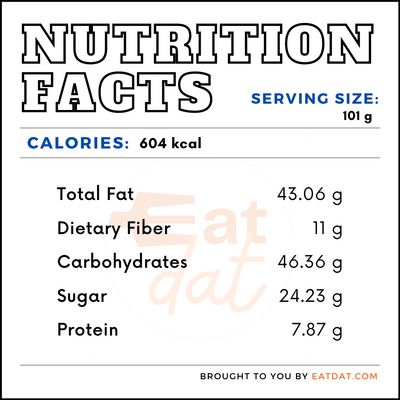
Dark Chocolate
also known as Black Chocolate
What is Dark Chocolate?
Dark chocolate, sometimes called black chocolate, is a form of chocolate containing cocoa solids and cocoa butter found in many other chocolate varieties.
- It can contain anywhere between 50-100% cacao.
- Many health practitioners believe that dark chocolate may be healthier than other forms of chocolate due to the absence of large amounts of sugar.
Nonetheless, some may contain a high level of a mix of sugar and milk, as seen in the milk chocolate variety. This food is also known for its antioxidants and associated health benefits.
The top six most popular dark chocolate brands on the market are:
- Perugina 70% Bittersweet Chocolate
- Tony’s Chocolonely 70% Dark
- Lindt 70% Dark
- Chocolove 70% Strong Dark
- Ghirardelli 72% Twilight Delight
- Green and Black’s Organic 70% Dark
Origin of dark chocolate
This chocolate is believed to have been in existence for over 3,000 years. It is said to have gained prominence in central and southern America as a drink around 1900 B.C. Also, it is thought to have been the only available drink during that time. After this period, it was made into other drinks for the Aztecs and Mayans and used in ceremonies, as well as for medicinal purposes. Due to the bitter taste of dark chocolate, it was continually modified over decades to become the version we know today.
Function
Dark chocolate is commonly used in chocolate bars and can also help craft a variety of beverages, including crème de cacao. Additionally, it can be used in making some pastries and snacks. Furthermore, it is popular as a spread or topping.
Nutrition
A 101g bar of this food contains:

Research shows that this food contains minerals like iron, magnesium, and zinc. It also contains antioxidants called flavonoids, which have various health benefits such as reducing oxidative stress and fighting free radicals. Dark cocoa, a primary ingredient in producing this food, performs health functions like protecting against heart disease, reducing blood pressure and regulating cholesterol level in the body, improving brain health, as well as helping curbs insulin resistance in the body.
However, this food also contains caffeine and related chemicals. As a result, excess consumption can cause increased urination, sleeplessness, rapid heartbeat, anxiety. Some studies suggest that consuming excessive amounts of caffeine during pregnancy can upset the placenta.
Commercial production
The commercial production of black chocolate is distinct from making it at home, as the processes are more technical and mechanized. The production begins with passing the cocoa bean through a machine that removes the dried cocoa pulp and other materials. Next, the beans are carefully weighed and blended. After that, other unnecessary materials in the production are removed by specialized vacuum equipment.
Later, the cocoa beans are roasted for 30 minutes to 2 hours at a temperature range of 250°F or higher. The beans are turned from time to time to ensure they lose all moisture and the color also changes to rich dark brown. Then, the bean shells are removed, as they become brittle due to the roasting, after the cocoa beans are cooled. After that, the beans are cracked instead of crushed. The broken pieces are then separated according to their size, and the dust particles are blown away. Finally, the nibs or meat are blended with other varieties.
When the nibs are grounded together, they produce a paste. The paste is further subjected to hydraulic pressure and pure cocoa butter. Some valuable fat with a pleasant aroma, which resembles butter, oozes out, and is then filtered and purified. The last part involves separating the cocoa butter from pure chocolate. This is done by putting it under further hydraulic pressure and is left to cool when the chocolate is collected.
Application
Dark chocolate can be made in the comfort of your home with little or no previous knowledge. The preparation time for making a chocolate bar may last an average of 70 minutes. This food should be stored in a cool, dry place. However, it’s recommended to avoid refrigeration. Always store this food in an air-tight container and away from light.
Dark chocolate recipes
Black chocolate can bring a world of flavor to many dishes. Some recipes include:
- Raspberry & Dark Chocolate Teacakes
- Chocolate Pots de Crème
- Luscious Hot Chocolate
- Ferrero Rocher Brownies
- Salted Chocolate Tart
FDA Regulations
The FDA does not currently have any regulations concerning dark chocolate. However, the body provides current good manufacturing practices, hazard analysis, and risk-based preventive controls for chocolate. They also describe the specific requirements for the standardization of cocoa products. Furthermore, the FDA offers advice for individuals with a milk allergy who may want to purchase dark chocolate.
References
Mchugh, Tara. “How Dark Chocolate Is Processed.” Phys.org, Phys.org, 28 Apr. 2016, phys.org/news/2016-04-dark-chocolate.html. https://phys.org/news/2016-04-dark-chocolate.html
Grivetti, Louis Evan. “Dark Chocolate.” Chocolate, pp. 255–262., doi:10.1002/9780470411315.ch21. http://bakingbites.com/2012/11/what-is-dark-chocolate/
“Chocolates & Heart Health.” Cleveland Clinic, my.clevelandclinic.org/services/heart/prevention/nutrition/food-choices/benefits-of-chocolate. http://my.clevelandclinic.org/services/heart/prevention/nutrition/food-choices/benefits-of-chocolate
